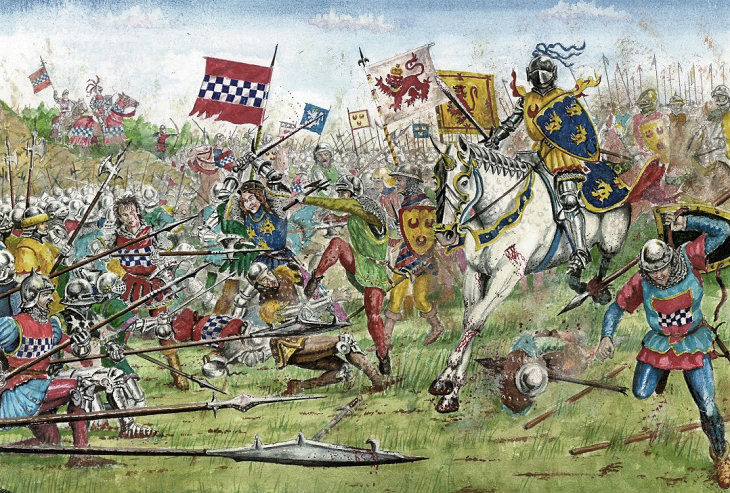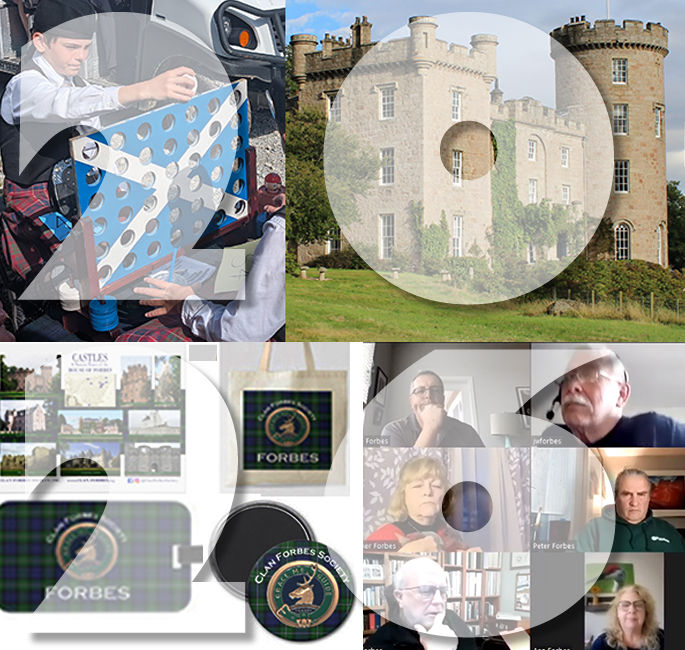Third Lord Forbes
- Bart Forbes

- Dec 20, 2020
- 4 min read
William Forbes was born around 1440 as the eldest son of the James Forbes, then Master of Forbes, and Gille Egidia Keith, daughter of Sir William Keith, 1st Earl Marischal. He was named after his uncle, William Forbes, Provost of St. Giles of Edinburgh, and great uncle, Sir William Forbes, 1st Lord Pitsligo. He was later nicknamed “Grey Willie” from his prematurely gray hair and fair complexion.

At the age of 11 or 12, William accompanied his father to the Battle of Brechin on May 18th, 1452. At this battle, the Forbes joined his mormaer Alexander Seton (changed to Gordon in 1457), Earl of Huntly who led a royalist army that included Clan Gordon and Clan Ogilvy. They defeated the army of Alexander Lindsay, 4th Earl of Crawford, (“Earl Beardie”) and the “Black Douglases” who opposed King James II.
Even though he was not yet a teenager during the battle, the Forbes manuscript noted that “He was a hardy and mettlesome gentleman” and “gave such uncontested proofs of his resolution and bravery.” The manuscript, rather generously, added that “the victory in a great measure was ascribed to his fortitude and the undauntedness of his followers, so that all spake liberally to his advantage and praise.”
His behavior during the battle was certainly noted by the Earl of Huntley, who later approved William’s marriage to his daughter Christian Gordon. The Forbes manuscript noted “by which honourable match the family of Forbes did first contract Allyance with the Earle of Huntley and the illustrious sirname of Gordone.” William succeeded as the third Lord Forbes upon his father’s death in 1462. Sometime between then and 1468, he married Christian Gordon and he received a charter of the lands of various property from the Earl, his father-in-law. As noted in the official deed: “Alex, erle of Huntly, with the consent of his son George lord Gordon by the direction of Alex. Skene their baillie, to William Lord Forbes of the lands of Abergardine in the barony of Aboyne of the lands of Tilliefour and Tillykerrie in Tulch, in barony of Cluny and of Suthnahunny in Mygmar.”
William appeared as proxy for the Earl of Huntley in the Parliament on October 9th, 1464. Three years later in 1467, he entered into a Bond of manrent with the heads of Clanchattan for the mutual defense and protection of their respective families. This bond of mutual support included “Honourable Lord William Lord Forbes, Sir Alexander Forbes of Pitsligo, Alexander Forbes of Toquhan, Arthur of Forbes and John of Forbes of Brouchous” on the one side and “Honourable Men Duncan Makintosh Chief and Captain of Clanchattan, Hutcheon Ros Baron of Kilravock, Lauchlan and Allan Makintosh Brothers to the said Duncan” on the other side. The agreement obliged the Forbes clan “baith for themselves and all and sundry their Kin Men Party and Inheridance that will adhere to them to keep hairtie Friendship, Kinrent, Love and Tendernes, and to tak open upright Pairts in all and sundry their Causes and Quarrels with the foresaid Duncan Hutcheon, Lauchlan and Allan and till all their Kin Men Pairty and Inheridence.” The agreement warns that “whosoever brakes in any of thir Conditions shall be hauldin unfamous, mensworn & to renounce their Faith of Christ, and never to be heared in Proof na Witness na Ly in Kirk nor Christin Burial.”
William also gave a bond of manrent for himself and his heirs to Alexander, Earl of Huntly, and George, Lord Gordon’s son, similar to that made with the Clan Chattan. This was the second document of the allegiance between the houses of Huntly and Forbes. Huntly signed on the same day an equivalent bond, obliging himself to assist and defend William, Lord Forbes, against all enemies. “Our soverane Lord out tane.” The witnesses to this bond were the Bishop of Moray and Aberdeen, the Abbot of Aberbrothoc, Alex. Lord Glamis, William Lord Abernethy, Walter Lindsay, William Knoll, Walter Stewart of Strathoun, knight, Malcolm Fleming and Sir James Ogilvy, knight.
King James III confirmed Lord Forbes as a Lord of Parliament in a charter dated August 19th, 1474. On July 9th, 1477, the King also confirmed King James I’s charter of the barony of Forbes granted to Sir Alexander Forbes, 1st Lord Forbes. This land was held directly from the King, without any intermediary, such as the Earl of Huntley.
Lord Forbes died sometime between 1477 and 1483. By his wife, Christian Gordon, he had three sons: Alexander, 4th Lord Forbes, who died without issue; Arthur, 5th Lord Forbes, who also died without issue; and finally John, 6th Lord Forbes. Their daughter Christian married William, 1st Lord Ruthven. She was his second wife and they had four children: John Ruthven; William Ruthven of Ballindean; Margaret Ruthven, who married first Alexander Stewart, 2nd Earl of Buchan, second John Erskine of Dun, and third James Stewart of Ryland, and fourth William Wood of Bonnyton; and Elizabeth Ruthven, who married first William Hay, 5th Earl of Erroll and second Ninian Ross, 3rd Lord Ross.




Comments